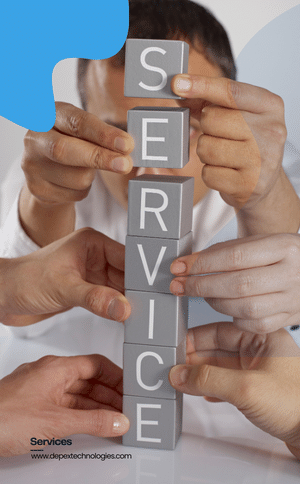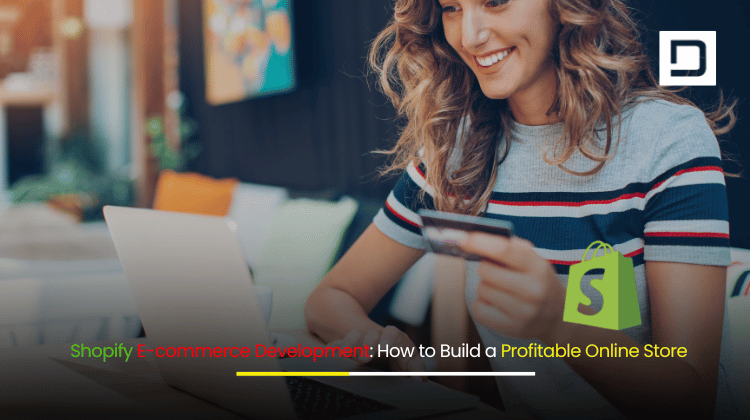Shopify E-commerce Development: How to Build a Profitable Online Store
The rise of e-commerce has transformed the way businesses reach customers. Among the various platforms that enable entrepreneurs to launch online stores, Shopify stands out as one of the most popular and reliable options. With its user-friendly interface, robust features, and scalability, Shopify offers everything you need to build a successful online store.
In this blog, we will explore the key components of Shopify e-commerce development and provide insights on how to create a profitable online store using this platform. Whether you’re a small business owner or an established brand, this guide will help you navigate the complexities of building a profitable e-commerce business.
Why Choose Shopify for E-commerce Development?
Before diving into the development process, let’s understand why Shopify is a popular choice for e-commerce development.
- Ease of Use: Shopify is designed to be user-friendly, making it accessible for beginners and experienced developers alike. You don’t need advanced technical knowledge to build a store; Shopify provides intuitive tools and templates to make the process smooth and efficient.
- Customizability: While Shopify is easy to use, it also offers flexibility for developers. With access to Shopify’s Liquid templating language, developers can customize the store’s design, layout, and features to align with your brand’s identity.
- Scalability: Shopify can scale as your business grows. Whether you’re starting with a small collection of products or managing thousands of SKUs, Shopify can handle your business’s growth seamlessly.
- Security: Shopify provides SSL certificates, ensuring your online store is secure and your customers’ information is protected. This is essential for building trust with your customers.
- Integrations and Apps: Shopify has a wide range of integrations and apps that enhance store functionality, such as payment gateways, shipping options, and marketing tools, all of which streamline your business operations.
Now, let’s dive into how to leverage these features to create a profitable online store.
Step 1: Define Your Niche and Business Goals
Before starting your Shopify e-commerce store, it’s essential to define your niche. Understanding the market and customer needs will help shape your product offerings and marketing strategies.
- Identify Target Audience: Understanding who your customers are is crucial to designing a store that caters to their needs.
- Set Clear Business Goals: Whether you’re aiming to boost sales, expand your customer base, or create a unique brand identity, clearly defined goals will guide your Shopify development process.
Having a clear business plan will ensure that every step of your Shopify e-commerce development aligns with your objectives.
Step 2: Selecting the Right Shopify Plan
Shopify offers different pricing plans, each tailored to different business needs. Depending on the scale of your operation, you can choose a plan that fits your requirements.
- Basic Shopify: Ideal for new businesses and entrepreneurs with limited product listings.
- Shopify: A more robust plan for businesses with higher traffic and sales.
- Advanced Shopify: Best for large businesses that need advanced analytics, reporting, and automation features.
It’s important to choose the plan that suits your current needs while keeping in mind potential future growth.
Step 3: Choosing a Shopify Theme and Customizing Your Store
The visual appeal of your online store plays a significant role in attracting customers and encouraging conversions. Shopify offers a wide variety of themes, both free and premium, that you can customize.
- Select a Responsive Theme: Ensure the theme you choose is mobile-friendly. A significant amount of e-commerce traffic comes from mobile devices, so it’s essential that your site looks great on both desktop and mobile screens.
- Branding and Design: Customize your theme to reflect your brand’s identity. This includes adjusting colors, fonts, and layout. Shopify’s flexibility allows for significant customization, so you can align the design with your business’s visual identity.
- Navigation and User Experience: Simplify the user experience by creating easy-to-navigate categories, filters, and product pages. A seamless user experience leads to higher conversion rates and customer satisfaction.
Step 4: Adding Products and Managing Inventory
Product management is at the heart of every e-commerce business. Shopify makes it easy to add products and manage inventory with the following steps:
- Product Listings: Each product listing should include high-quality images, detailed descriptions, and pricing. Make sure to optimize product descriptions with relevant keywords to enhance SEO.
- Inventory Management: Shopify allows you to track stock levels and receive notifications when stock is running low. You can also set up backorders if needed, ensuring you never miss out on potential sales.
- Product Variants: If your products come in different sizes, colors, or styles, Shopify makes it easy to create product variants. This provides a better shopping experience for your customers.
Step 5: Setting Up Payments and Checkout
To run a successful Shopify store, you need a reliable payment system that ensures secure transactions. Shopify offers several payment gateway integrations, including Shopify Payments, PayPal, and third-party gateways like Stripe.
- Payment Methods: Choose the payment methods that are most convenient for your customers. Offering multiple options can increase the likelihood of conversions.
- Secure Checkout: Shopify’s checkout process is optimized for simplicity and security. You can customize your checkout experience and offer customers a fast and secure way to complete their orders.
- Abandoned Cart Recovery: Shopify also offers an abandoned cart recovery feature that helps you bring back customers who left items in their cart without completing the purchase.
Step 6: Optimizing for SEO
Search engine optimization (SEO) is crucial for driving organic traffic to your Shopify store. Shopify comes with built-in SEO features that allow you to optimize your store easily.
- Optimize Product Pages: Use relevant keywords in product titles, descriptions, and metadata. This helps your products rank higher in search results.
- Meta Tags and Descriptions: Ensure that each page, product, and blog post has unique and compelling meta descriptions. These appear in search results and can impact your click-through rate.
- Fast Loading Speed: Shopify offers fast loading times, but optimizing image sizes and using a Content Delivery Network (CDN) can further speed up your site, improving both SEO and user experience.
Step 7: Marketing Your Shopify Store
Building a Shopify store is just the beginning; you also need to drive traffic and convert visitors into customers. Here are some strategies to market your store:

- Email Marketing: Set up an email marketing campaign to stay in touch with your customers. Use personalized emails, discounts, and updates to engage your audience.
- Social Media Integration: Integrate your Shopify store with social media platforms like Instagram, Facebook, and Pinterest. Social media is a great way to promote your products and connect with your target audience.
- Paid Advertising: Invest in paid ads, such as Google Ads or Facebook Ads, to drive targeted traffic to your store.
- Content Marketing: Create blog posts, product tutorials, and videos to educate your customers and build brand authority. Shopify makes it easy to add a blog to your store to improve SEO and customer engagement.
Step 8: Analyzing and Optimizing Performance
Once your store is up and running, it’s essential to analyze its performance regularly to identify areas for improvement.
- Shopify Analytics: Use Shopify’s built-in analytics tools to track sales, customer behavior, and traffic sources. These insights will help you make data-driven decisions to optimize your store’s performance.
- Customer Feedback: Listen to your customers’ feedback to continuously improve your products, store design, and user experience.
- Conversion Rate Optimization (CRO): Conduct A/B testing to experiment with different layouts, product images, and calls-to-action to improve conversion rates.
Conclusion: Build Your Profitable Shopify Store with Depex Technologies
Building a profitable Shopify e-commerce store requires a clear strategy, attention to detail, and the right tools. From selecting the right Shopify plan to optimizing for SEO, each step plays a crucial role in ensuring your store’s success. At Depex Technologies, we specialize in helping businesses create customized Shopify stores that align with their brand and business goals.
If you’re looking to develop a robust and scalable Shopify store, Depex Technologies can provide you with expert guidance and dedicated Shopify developers who will work with you every step of the way. Whether it’s customizing your theme, integrating payment systems, or driving traffic to your store, we have the expertise to help you build a successful online store.
Contact Depex Technologies today to get started on your Shopify e-commerce development journey and take your business to the next level.






